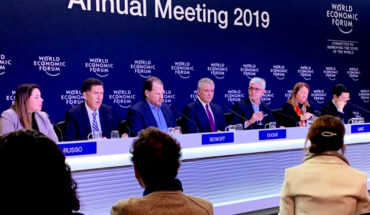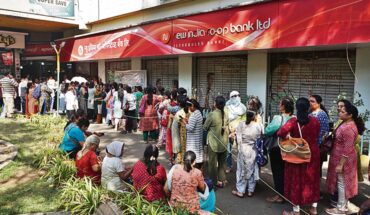For the financial year 2024-2025, India achieved a notable gross domestic product (GDP) growth rate of 6.5%. This figure was driven by quarterly performances that showcased fluctuations: in the first quarter, the economy expanded by 6.7%, followed by a sharper slowdown to 5.4% in the second quarter. The third quarter saw a rebound to 6.2%, culminating in a robust performance in the fourth quarter, which recorded a growth rate of 7.4%. Particularly encouraging was the performance of the agriculture and allied sectors, which registered growth of 3.8%, a significant improvement over the previous year’s 1.4% increase. Concurrently, the construction sector thrived, posting an impressive growth rate of 8.6%, while the finance, real estate, and professional services sectors expanded by 7.3%. This current growth trajectory stands in stark contrast to the economic turmoil experienced in FY 2020, when the GDP contracted by -5.8%, followed by a remarkable recovery to 9.7% in FY 2021, continued growth of 7.0% in FY 2022, and an 8.2% increase in FY 2023.
In FY24, the landscape was complicated by declines in both private final consumption expenditure and government final consumption expenditure. However, private consumption still exhibited a growth of 7.3%, while government consumption rose by 4.1%. Despite these setbacks, agriculture improvements, robust rural demand, government investment, and performance in the service sectors made substantial contributions to sustaining the GDP growth rate.
Currently, India faces headwinds including persistently high loan interest rates, challenges in the manufacturing and mining sectors, and global economic uncertainties. The new tariff policy introduced by former US President Donald Trump has particularly hampered India’s export capabilities. According to Moody’s, these tariffs on vital sectors such as diamonds, clothing, and medical equipment may result in a 0.3% reduction in the GDP growth rate. Nevertheless, Moody’s remains optimistic, suggesting that government infrastructure spending, coupled with a potential reduction in policy rates, will stimulate consumption and bolster growth in the economy. The agency also anticipates continued improvement in the banking sector’s performance, particularly with a further decline in non-performing assets (NPAs).
A strong indicator of economic health is the increase in Goods and Services Tax (GST) collections, which highlight robust consumer spending and industrial activity, along with effective tax compliance. In May 2025, for instance, the government collected ₹2.01 lakh crore through GST, marking a remarkable 16.4% increase compared to the previous year. For context, the GST collection in May 2024 was ₹1.73 lakh crore, while April 2025 saw a record high of ₹2.37 lakh crore.
However, the growth of bank credit has faced a downturn, declining to 11.2% year-on-year as of April 2025, a notable decrease from 15.3% during the same period the previous year, primarily attributed to high lending rates. The rating agency ICRA forecasts credit growth to stabilize at around 12% for FY25, down from 16.3% in FY24. Furthermore, Standard & Poor’s has projected that credit growth may range between 12% and 14% in FY25 owing to continued elevated interest rates.
At present, banks are grappling with challenges related to deposits. The emergence of attractive investment alternatives in the market has led many investors to divert their funds away from traditional bank deposits. Consequently, by January 2025, the growth rate of bank deposits plummeted to only 10.3%, a slowdown compared to the previous year. This dip in deposits restricts banks’ capacity to extend loans to borrowers, thus hampering broader economic activity. To alleviate this situation, a flow of cheaper capital to banks is contingent upon the Reserve Bank of India decreasing the repo rate. The repo rate, the rate at which the Reserve Bank lends to commercial banks, plays a crucial role; a reduction allows banks to secure loans at lower interest rates, thereby facilitating decreased borrowing costs for consumers and businesses.
Typically, the Reserve Bank is cautious about lowering the repo rate in the face of high inflation, as inflation presents a significant barrier to development. In April, however, retail inflation fell to 3.16%, marking the lowest level in 69 months, since July 2019 when it was recorded at 3.15%. Wholesale inflation also dropped to a 13-month low of 0.85%, a decrease from 2.05% in March, 2.38% in February, and 2.31% in January. This decline in both retail and wholesale inflation has been largely driven by reduced food prices, which have helped to stabilize the economic environment.
The Reserve Bank of India possesses a critical instrument for managing inflation known as the repo rate, which plays a pivotal role in influencing the country’s economic climate. When inflation escalates to concerning levels, the Reserve Bank takes decisive action to curb excess liquidity in the economy by raising the repo rate. This increase signifies a higher cost for banks to borrow funds from the Reserve Bank, which in turn leads them to elevate their own lending interest rates. As borrowing becomes more expensive, consumer and business expenditure typically contracts, resulting in reduced liquidity in the marketplace. This contraction in the money supply dampens demand for goods and services, thereby exerting downward pressure on inflationary rates.
In contrast, during periods of economic stagnation characterized by sluggish growth, it becomes essential to infuse more money into the economy to stimulate activity and enhance growth prospects. In such scenarios, the Reserve Bank may respond by lowering the repo rate. This action diminishes the cost of borrowing, encouraging banks to pass on the benefits to consumers and businesses through lower lending rates. The aim is to invigorate spending and investment, thus driving economic expansion.
Inflation has a profound impact on the purchasing power of individuals. For instance, if the inflation rate stands at 7%, the effective value of Rs 100 received diminishes to just Rs 93 in real terms, illustrating how inflation erodes the value of money over time. This reality underscores the importance of strategic investments that can safeguard against inflationary pressures; otherwise, the real value of savings may decline considerably during high inflation periods.
Moreover, the interplay between inflation, consumer demand, and supply dynamics is highly intricate. When consumers benefit from a higher disposable income, they typically increase their spending on goods and services. This heightened demand can lead to a scenario where supply struggles to keep pace, resulting in rising prices—a fundamental characteristic of inflation. Conversely, if there is an abundance of goods available yet consumer demand remains low, inflationary pressures tend to recede, contributing to price stabilization.
Looking ahead, the Monetary Policy Committee (MPC) of the Reserve Bank of India is scheduled to unveil its monetary policy decisions on June 6. In light of several influencing factors, including the anticipated normal monsoon rains which can impact agricultural output, a projected slowdown in GDP growth, ongoing inflation levels, and the current constraints on bank capital, market analysts predict that the Reserve Bank may implement a repo rate cut ranging from 0.25% to 0.50% during this review. It’s noteworthy that in its previous two monetary policy meetings, the Reserve Bank had already opted to reduce the repo rate by 0.25% each time, as part of a strategy aimed at fostering economic growth.
Satish Singh, Ahmedabad based Senior Columnist, Views are personal.






